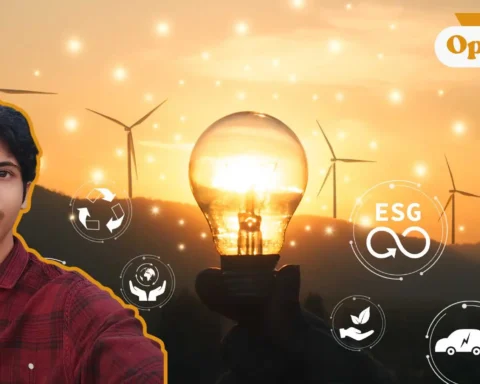It does not take a study to know that children are the top priority for all parents. In many ways, the world often acts while keeping their well-being in mind. Ideally, businesses should also be doing that. Unfortunately, it is not always the case.
Here, we are pointing fingers at TikTok, one of the most popular social media platforms in the world.
Table of Contents
TikTok discovered that underage streamers were receiving gifts or coins in exchange for stripping, often in the form of a plush toy or a flower. This was discovered after an internal investigation following a Forbes report. TikTok officials are now investigating the issue further.
Secret documents obtained by NPR and Kentucky Public Radio reveal alarming evidence that TikTok executives were aware of potential harm to teens but appeared indifferent. This comes after a two-year probe by 14 attorneys general, culminating in lawsuits filed against the company. Furthermore, other significant allegations against TikTok, a platform with 170 million U.S. users, remain underreported.
US state investigators have found that an average TikTok user can become addicted in under 35 minutes, watching 260 videos in just a few seconds, highlighting the platform’s overwhelming nature. According to an internal report viewed by Kentucky investigators, TikTok’s algorithm has been modified to boost attractive users’ visibility. The company aimed to promote a narrow beauty norm, potentially affecting its Young Users.
The social media app allows parents to set time limits for children’s usage, ranging from 40 minutes to two hours daily. A tool was introduced to set the default limit at 60 minutes per day to combat excessive use, but tests showed it had little effect. The goal was to enhance public trust through media coverage. TikTok has disclosed that 95% of smartphone users under 17 access the platform monthly, raising concerns among staff. An internal document instructs moderators to avoid reporting underage users unless they are 13 or younger. The company is on an unethical path to dominate the world.

According to an unnamed executive, TikTok’s algorithm disrupts children’s normal activities, including sleep, work, and social connections, preventing them from eating, moving, and making eye contact. Advocacy groups such as the Oversight Project welcome the disclosures, claiming TikTok has not been honest about its safety practices despite its disclosures.
In a previous report, it has been pointed out that California and New York are among over a dozen states suing TikTok for misleading the public about the app’s safety and contributing to a teen mental health crisis, seeking to force changes and impose financial penalties.
TikTok is accused of prioritizing growth and profits over child safety. It claims the platform targets children due to their lack of defenses and ability to create healthy boundaries around addictive content. Similar lawsuits against Instagram and Facebook owner Meta are still pending. TikTok has adopted a hyper-personalized algorithm, endless scrolling, and push notifications. Attorneys general argue the company has downplayed its dependence to boost its bottom line.
Employees discussed exactly what it takes to keep TikTok users compulsively scrolling while admitting their choices interfered with young people’s sleep, school, and connections with real people – chillingly reminiscent of Meta whistleblower Arturo Béjar’s testimony last year.
Points to Ponder
‘It takes a village to raise a child.’ This is an old African saying. This proverb emphasizes the importance of collective responsibility, support, and cooperation, valuing social cohesion and the benefit of a child’s growth. Fast forward, now it takes the world to raise a child.
Psychological Impact on Users
The prioritization of attractive content by TikTok’s algorithms can harm users’ self-esteem and body image. Constant exposure to visually appealing individuals can lead to unhealthy social comparisons, where users feel inadequate or unworthy. This normalization of narrow beauty standards particularly affects young people still forming their identities, leading to possible long-term psychological repercussions.
Influence on Content Creation
Content creators on TikTok face pressure to conform to prevailing beauty norms to gain visibility. This dynamic stifles diversity and originality in content creation as creators may feel compelled to prioritize appearance over creativity. The culture of validation through likes and shares can deter authentic expression, resulting in a homogenization of content that aligns with societal beauty ideals.
User Engagement and Addiction
TikTok’s algorithm is designed to enhance engagement by providing users with progressively appealing content, which can lead to addictive behaviour. The phenomenon of compulsive usage is particularly concerning among younger demographics, with many users reporting significant amounts of time spent on the platform. This addiction can detract from important life activities, including education and social interactions, exacerbating mental health issues and issues related to addiction.
Ethical and Legal Considerations
The strategies employed by TikTok raise ethical questions regarding user safety, particularly for minors. Concerns around data privacy, content moderation, and the exposure of young users to inappropriate content have led to scrutiny from regulatory bodies. TikTok faces potential legal repercussions if it is found to violate standards designed to protect vulnerable populations, necessitating an examination of its content moderation practices and user policies.
Societal Norms and Expectations
By prioritizing certain beauty standards, TikTok influences broader societal perceptions about beauty, behaviour, and self-worth. This impact is particularly notable among youth, who are still developing their social frameworks. The pressures to conform to these standards can lead to a perpetuation of discrimination based on appearance and a narrow definition of attractiveness and desirability in society.

Response from Stakeholders
The erosion of public trust resulting from TikTok’s prioritization of engagement over user well-being has sparked a call to action from various stakeholders. Parents, advocacy groups, and educators increasingly demand greater accountability from TikTok regarding user safety and ethical content management. Achieving a balance between user engagement and well-being will require robust discussion and possibly the implementation of new regulations to foster a healthier online environment for users.
Questions for All
- Is TikTok rewiring our children’s brains for short-term gratification, making them incapable of focusing on long-term goals?
- How can we prevent TikTok from becoming a breeding ground for insecurities, anxiety, and unrealistic expectations among vulnerable teens?
- Is TikTok fostering a generation obsessed with superficial content, undermining critical thinking and real-world problem-solving skills in our youth?
Conclusion
TikTok’s user engagement, content creation, and algorithmic prioritization strategies have significant societal, psychological, and ethical implications. These challenges, especially for young audiences, raise questions for stakeholders like parents, educators, and policymakers. The strategies highlight the intersections between technology, user psychology, and societal norms. Stakeholders must engage in dialogues to improve user safety and mental health, promote diversity, and create regulatory frameworks to address these implications.
Children are our greatest treasure and the promise of tomorrow. We dedicate our lives to ensuring their well-being and cannot afford to be complacent about platforms like TikTok. These companies are far more dangerous than they appear. Their goal to weaken an entire generation is all too clear. We wonder who the masterminds behind this scheme are. Do you?









